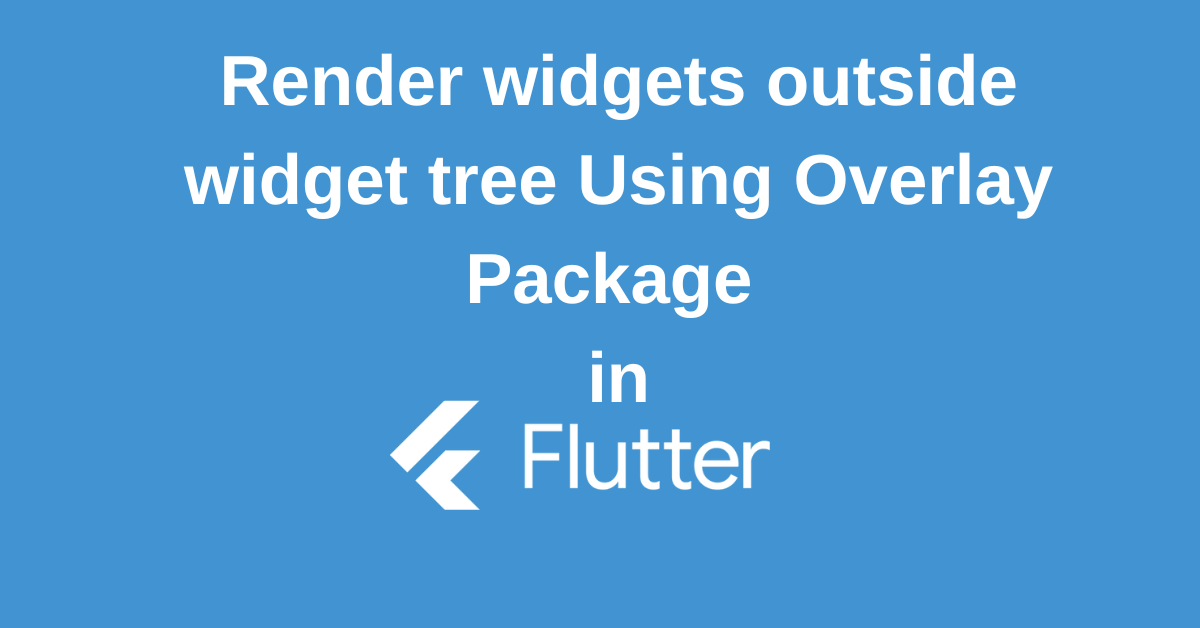Have you ever found yourself constrained by Flutter’s widget tree structure? Have you dreamt of placing widgets outside their traditional boundaries? Well, your dreams have come true! The Flutter Portal package is here to revolutionize the way you approach UI design. Forget about the limitations of hierarchical layouts; with Portal, you can position widgets anywhere on the screen, breaking free from the conventional widget tree. Prepare to be amazed as we explore how this groundbreaking package can transform your Flutter app.
What is the Flutter Portal Package?
Flutter Portal is a powerful package that liberates you from the constraints of the traditional Flutter widget tree. It allows you to position widgets anywhere on the screen, independent of their parent-child relationships. This means you can create overlays, tooltips, custom menus, and other complex UI layouts with unprecedented flexibility. Imagine placing a widget outside its parent’s boundaries, or even overlapping multiple widgets from different parts of the tree. With Flutter Portal, the possibilities are endless.
Essentially, it provides a portal to render widgets in a different part of the widget tree, overcoming limitations and opening up new creative avenues for UI design
Integrating Flutter Portal Package
Add the flutter_portal package to your Flutter project by including it as a dependency in your pubspec.yaml file.
dependencies:
flutter_portal: ^1.1.4Once you’ve added the package, make sure to run flutter pub get to fetch and sync the necessary dependencies. With Flutter Portal now available in your project, you can explore its functionalities.
Understanding the widget tree in Flutter
Flutter builds user interfaces using a tree-like structure of widgets, with each element being a widget. While this structure is efficient for most layouts, it can become restrictive when you need to place a widget in multiple locations or outside its parent’s boundaries. This is where the limitations of the traditional Flutter widget tree become apparent.
Solving widget tree challenges using Flutter Portal Package
The Flutter Portal package offers a solution to these widget tree limitations. It creates a ‘portal’ to place a widget anywhere on the screen, regardless of its original position in the widget tree. This means you can reuse a widget in different parts of your app without duplicating code. This is especially useful for creating pop-ups, tooltips, or other UI elements that need to appear in various locations.
To better understand the workings of Flutter Portal, consider the following example:
import 'package:flutter_portal/flutter_portal.dart';
class MyWidget extends StatelessWidget {
@override
Widget build(BuildContext context) {
return PortalEntry(
visible: true,
portalAnchor: Alignment.center,
childAnchor: Alignment.topCenter,
child: Container(
width: 200,
height: 200,
color: Colors.blue,
child: Center(
child: Text('Portal Widget'),
),
),
);
}
}In this example, we create a portal entry using PortalEntry. The visible parameter determines whether the widget should be rendered or not. We can define the position of the portal widget using portalAnchor and childAnchor, which determine the widget’s alignment relative to its portal and original position in the widget tree, respectively.
Real-world examples of using Flutter Portal
Let’s explore some real-world examples that showcase its usefulness.
1. Overlays and Popups:
- Modal dialogs: Create dialogs that appear above the current screen content, independent of the widget tree hierarchy.
- Tooltips: Display informative tooltips on specific UI elements without complex layout manipulations.
- In-app notifications: Render notifications on top of the main app content for urgent or important messages.
2. Customizable Layouts:
- Floating action buttons (FABs): Position FABs independently of the main content, allowing for creative placement options.
- Drag-and-drop interfaces: Create drag-and-drop functionality by allowing elements to be moved freely across the screen.
- Custom navigation bars: Build unique navigation experiences by placing navigation elements outside the standard app bar.
3. Game Development:
- UI elements on top of game world: Display game-related information or controls as overlays on the game screen.
- Pause menus: Create pause menus that appear independently of the game’s main UI.
4. Complex UI Structures:
- Nested layouts: Build intricate UI layouts with overlapping or independent components.
- Custom widgets: Create reusable custom widgets that can be inserted into different parts of the app.
In essence, Flutter Portal empowers developers to think outside the box when designing user interfaces. By breaking free from the traditional widget tree constraints, you can create more flexible, dynamic, and engaging user experiences.
Conclusion
The Flutter Portal package is undoubtedly a game-changer for Flutter developers. By offering unprecedented flexibility in widget placement, it opens up a world of creative possibilities. Whether you’re building complex overlays, tooltips, or custom UI components, Portal empowers you to design innovative and engaging user experiences. With its ability to transcend the traditional widget tree, Portal is a must-have tool for any Flutter developer looking to push the boundaries of app design. So, embrace the power of Portal and unlock the full potential of your Flutter apps!
Wanna Level up Your Flutter game? Then check out our ebook The Complete Guide to Flutter Developement where we teach you how to build production grade cross platform apps from scratch.Do check it out to completely Master Flutter framework from basic to advanced level.

